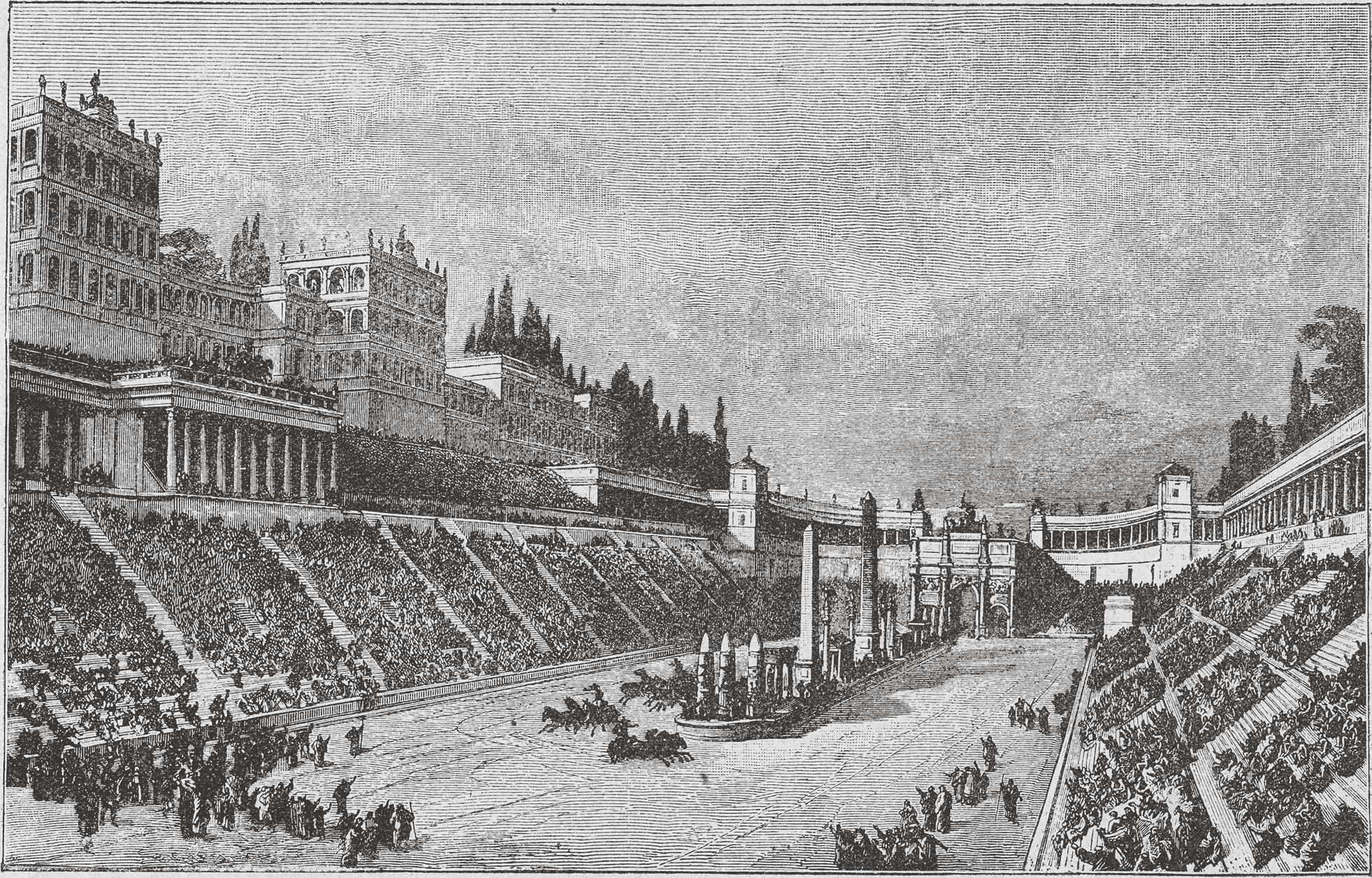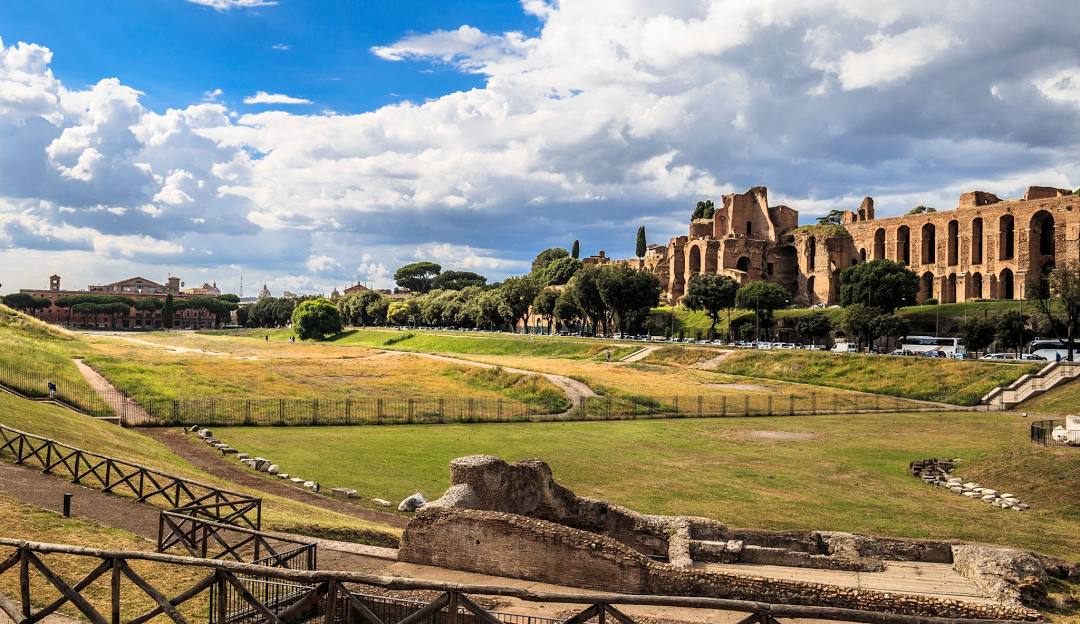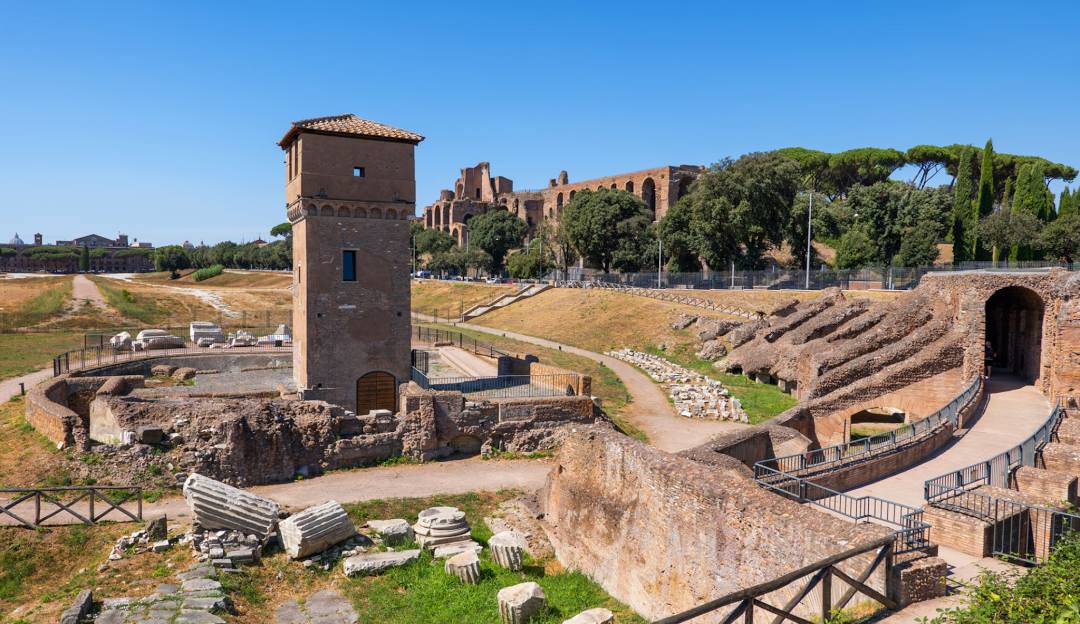The Circus Maximus, the largest and most iconic chariot racing stadium in ancient Rome, was a monumental structure that played a significant role in the public life of the Roman Empire. Stretching 600 meters long and 140 meters wide, it was located between the Palatine and Aventine hills, in the heart of Rome’s ancient city. Capable of holding up to 150,000 spectators, the Circus Maximus was not just a site for thrilling races, but also a symbol of Roman grandeur and an epic center for entertainment and politics.
Origins and Expansions: A Marvel of Roman Engineering
The story of the Circus Maximus begins in the 6th century BC, during the reign of the last Roman kings. Originally a simple track carved into the Valle Murcia, the stadium was built to host the burgeoning popularity of chariot races. The venue was an immediate success, drawing vast crowds to watch these high-speed, dangerous races.

Over the centuries, the Circus Maximus underwent several expansions and renovations, reflecting the growing scale of Roman society. The Emperor Julius Caesar was one of the key figures responsible for enlarging the venue, making it capable of accommodating even larger crowds. His successor, Emperor Augustus, also made substantial improvements, enhancing the stadium’s grandeur and reinforcing its status as the center of public entertainment.
The expansion efforts continued under subsequent emperors, despite the many challenges posed by fires, civil unrest, and political turmoil. These challenges led to numerous reconstructions, each one ensuring the stadium’s role as a vital public space in the heart of Rome.
Chariot Races and Other Spectacles: The Heart of Roman Entertainment
While the Circus Maximus is most famous for hosting chariot races, its role in Roman society went far beyond that. Chariot racing itself was not only a sport but a dramatic social and political event, often involving betting, factional rivalries, and deep public interest. Races typically featured teams of four or six horses racing around the stadium’s elongated oval track. These events were highly dangerous, with charioteers vying for victory at breakneck speeds, often leading to spectacular crashes and dramatic moments.

Races were fiercely competitive, with teams representing different political factions or colors, making the events a focal point of Roman social life. Spectators would passionately cheer for their favorite teams, adding a layer of political tension and excitement to the races. The Circus Maximus became not only a venue for athletic competition but also a social space for the expression of civic pride and political power.

In addition to the chariot races, the Circus Maximus was a venue for a wide array of other public spectacles. One of the most notable events hosted there were the Roman Games (Ludi Romani), which were held in honor of the gods and included a mixture of athletic contests, theatrical performances, and gladiatorial combats. Gladiatorial games, in which trained warriors fought to the death, added a layer of brutality and drama to the spectacle, further captivating the Roman populace.
Decline and Transformation: The End of an Era
By the 6th century AD, the Circus Maximus had witnessed the last of its grand chariot races. The decline of the Roman Empire and the rise of Christianity led to a decrease in the popularity of traditional pagan games. As the empire fractured and Rome’s political power waned, the grandeur of the Circus Maximus also began to fade. The stadium’s once-vibrant races gave way to other forms of entertainment, and much of the structure fell into disrepair.

Despite this decline, the Circus Maximus continued to serve as a public space for a variety of activities throughout the centuries, although it was no longer the epicenter of Roman entertainment that it once was.
Rediscovery and Modern-Day Use: A Living Landmark
The 20th century saw a renewed interest in the Circus Maximus when it underwent partial excavations, revealing portions of the track and seating areas that had long been buried. Though much of the original structure has been lost to time, these excavations have provided valuable insights into the scale and magnificence of the stadium.

Today, the Circus Maximus stands as an important archaeological site and cultural landmark. The arena, though no longer used for chariot races, has been repurposed as a modern public space. In recent years, it has hosted music concerts, political rallies, and large-scale public gatherings, continuing its legacy as a venue for civic engagement and entertainment.
Visitors to Rome can now walk through the remnants of the Circus Maximus, where they can imagine the roar of the crowds and the excitement of the chariot races that once filled the air. The site has become a symbol of the enduring legacy of Rome’s imperial past, a place where the ancient world and modern life meet.
Conclusion: The Enduring Legacy of the Circus Maximus
The Circus Maximus is not only a testament to the technological and architectural prowess of ancient Rome but also a symbol of its vibrant public life. From the thrills of chariot racing to the grandeur of gladiatorial games, it served as the epicenter of Roman entertainment, politics, and social life. Though its original purpose has long since passed, the Circus Maximus continues to captivate and inspire, offering a glimpse into the grandeur of Rome’s imperial past while remaining an active space for modern cultural expression. Its story, from ancient races to contemporary concerts, underscores the timeless appeal of public spectacle and the enduring power of history to shape our present.

